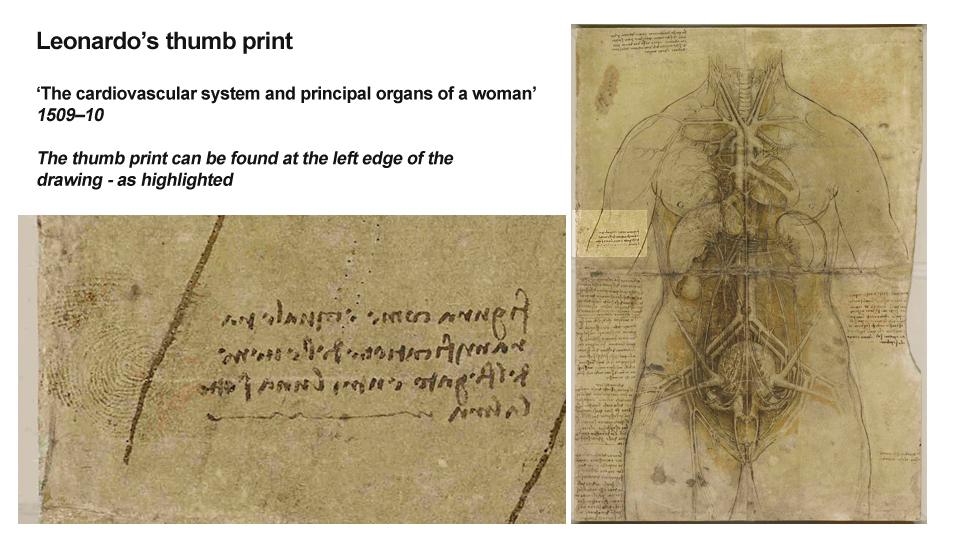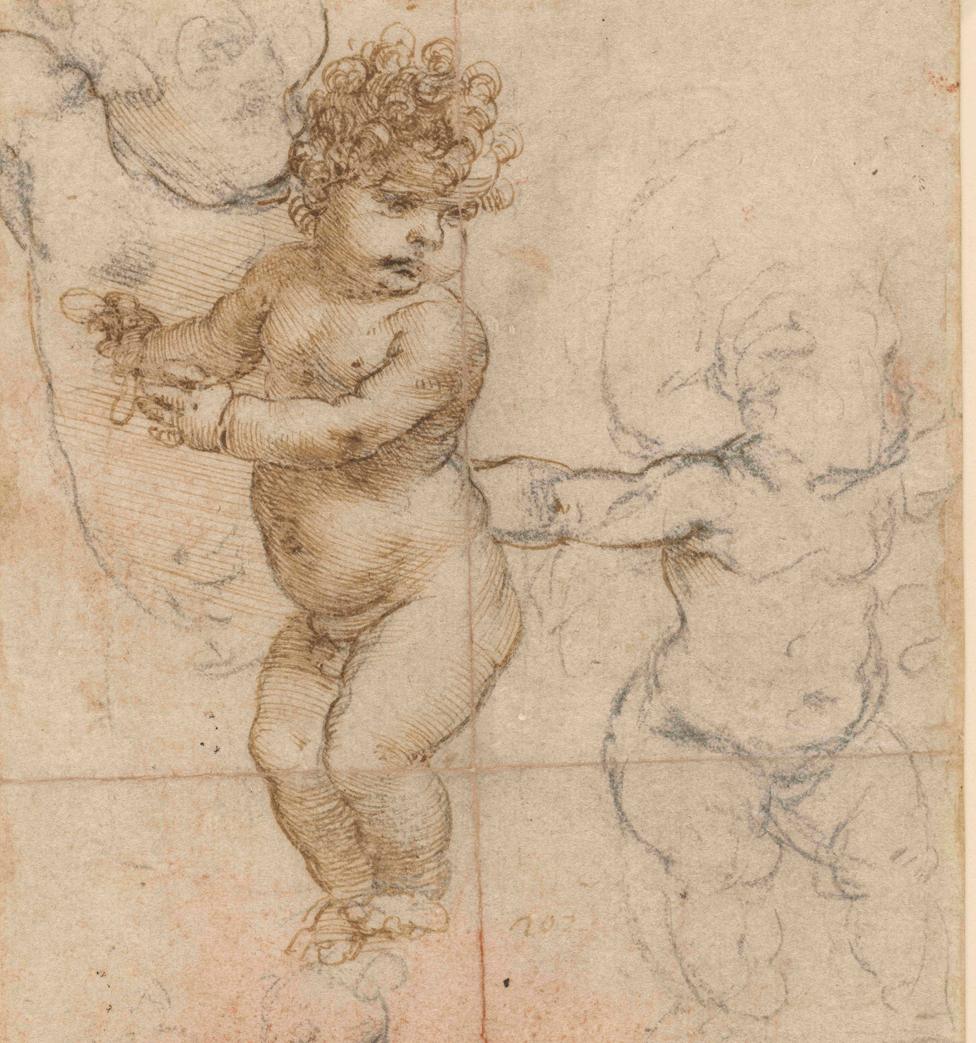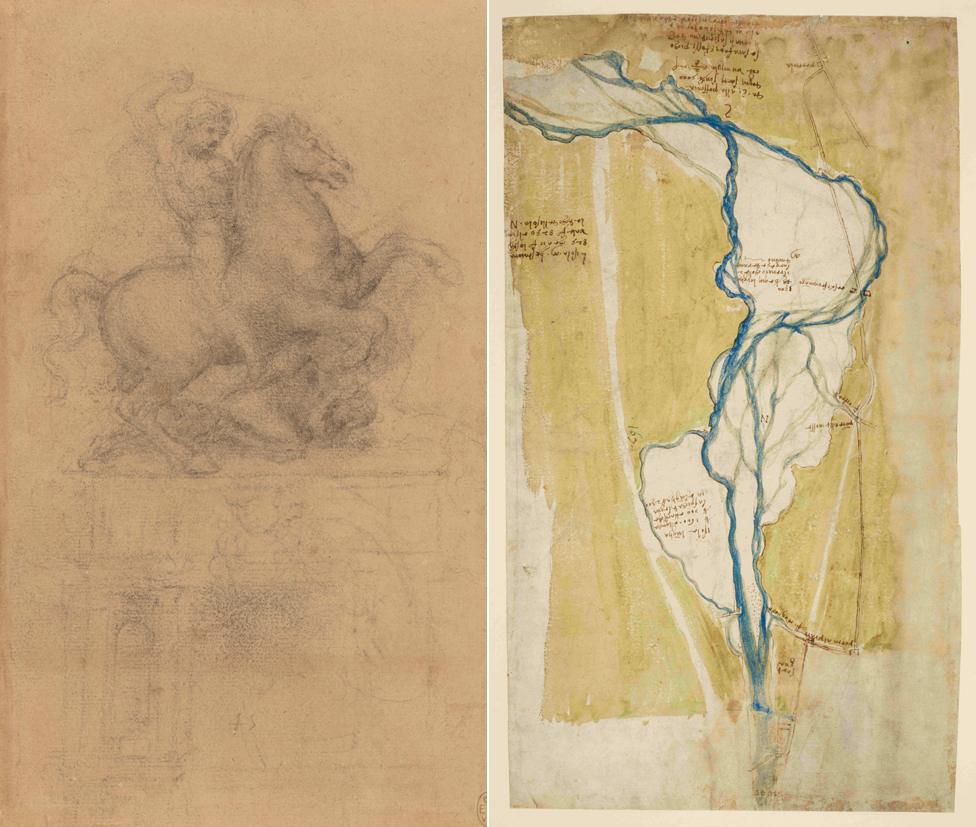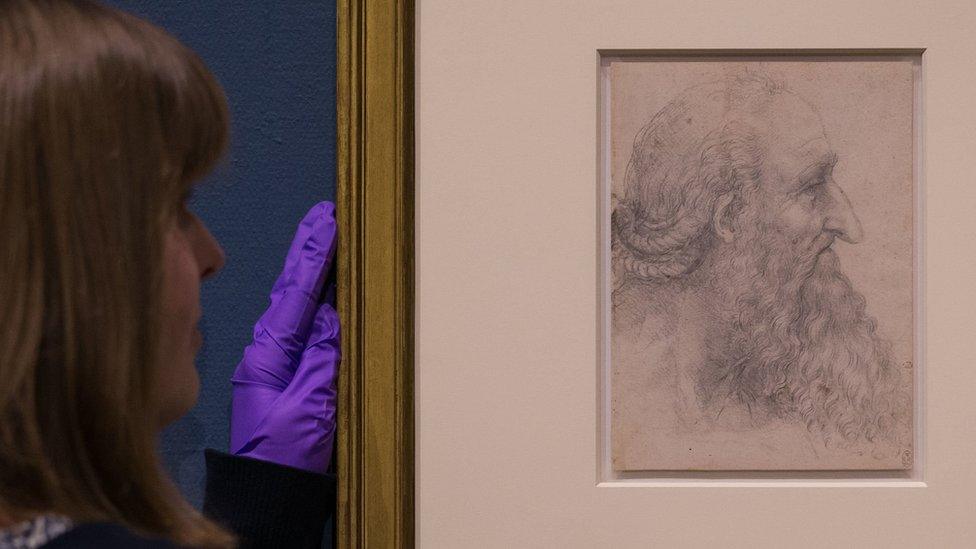Leonardo da Vinci's thumb print at National Museum Wales
- Published

The Leonardo Da Vinci thumb print in detail
A thumb print left by Leonardo da Vinci on one of his drawings has made its mark on a new exhibition in Cardiff.
It is one of 12 UK cities to be hosting Leonardo da Vinci: A Life in Drawing, to mark the 500th anniversary of the Italian renaissance master's death.
The artist left the inky print at the edge of an anatomical drawing of a woman, dated from around 1510.
One expert said it showed Leonardo as "the working artist".

Leonardo da Vinci (1452-1519) had wide interests in nature, science and the human body
The Royal Collection is showing 12 of Leonardo's drawings in 12 galleries simultaneously from Friday.
Those displayed at National Museum Cardiff include an anatomical drawing of a woman featuring the artist's inky thumbprint.
Visitors can use a magnifying glass to examine it, although the thumb print is remarkably clear given the age of the work.
Martin Clayton, the head of prints and drawings at the Royal Collection Trust, said: "We shouldn't see Leonardo as a genius, in an ivory tower, this was a working artist and you get a vision of him having to finish this extraordinary drawing, covered in ink - it really takes us back to the moment of creation.
"The thumb or fingerprint is so crisp it's almost like he did it deliberately, like a signature almost, although of course it wasn't."
Leonardo, in his mid 50s by this stage, had a reputation as a respected anatomist and worked closely with physicians in universities and hospitals, to study the human form in detail.
The drawing was part of a series he had wanted to include in a book about the human body, but it was never finished and it was among drawings undiscovered for 400 years.
It is part of a large collection of da Vinci works which are held by the Queen, and which have been kept together as a group since the artist's death in 1519.
Due to the fragile nature of the works, they are never on permanent display and are only ever on show for a few months at a time to protect them from exposure to light.

Studies of an infant
It brings together the polymath's interests in botany, geology, anatomy, science, architecture and the natural world.
Vanessa Remington, senior curator of paintings for the Royal Collection Trust, said: "The aim is to bring the genius of Leonardo to as wide an audience as possible in the UK.
"The Royal Collection Trust has more than 550 sheets of drawings and they're an extraordinary way to learn more about Leonardo."
The Cardiff exhibition includes drawings of babies, a skeleton and a detailed drawing of a stem of Job's tears.

A design for an equestrian monument (left) and Leonardo's map of the Arno west of Florence at the Cardiff show

'The head of an old bearded man in profile' on display at Birmingham's Museum and Art Gallery
Alongside the da Vinci drawings, National Museum Wales has created an exhibition of artefacts designed to complement the artistic and scientific nature of Leonardo's works.
It includes taxidermy, botanical prints and wax models.
"Hopefully it will attract people who are interested in both science and art," said Anne Pritchard, senior curator of historic art at National Museum Cardiff.
Leonardo da Vinci: A Life in Drawing, external can be seen at Belfast, Birmingham, Bristol, Cardiff, Derby, Glasgow, Leeds, Liverpool, Manchester, Sheffield, Southampton and Sunderland from Friday until 6 May 2019. Exhibitions will also open in London in May and in Edinburgh in November.
- Published24 January 2019

- Published18 January 2019

- Published4 January 2019
